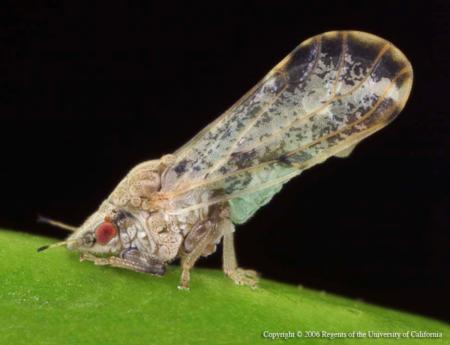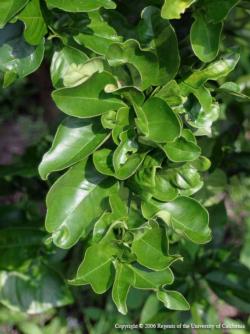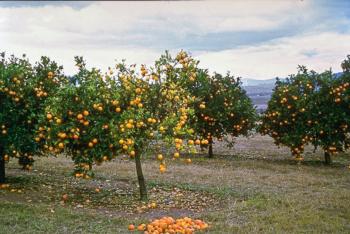Asian Citrus Psyllid (ACP)
Quick Summary
The Asian citrus Psyllid (Diaphorina citri) is a piercing-sucking insect that feeds on new leaf growth of citrus plants and closely related plants of the Rutaceae family (such as box orange, Indian curry leaf, orange jasmine, calamondin). The feeding can caused twisted or notched leaves. Feeding can also spread a bacterium, causing huanglongbin disease (HLB), which results in tree mortality. Because this disease threatens California citrus, and there is no known cure, there are major efforts to control the spread of this pest in California.
Asian Citrus Psyllid, Diaphorina citri

What to look for:
- Twisted, curled, or notched leaves caused by psyllid feeding (can occur with or without HLB disease)
- Sooty mold on leave surfaces from excess phyllid honeydew. May attract additional pests such as aphids, whiteflies, and softscales
- yellowing leaves on a limb or section of canopy
- yellowing asymmetrical (versus symmetrical pattern typically caused by environmental stressors)
- Twig and limb dieback in trees with progressed disease
- Fruit bearing ceases, and tree eventually dies
|
ACP feeding caused leaves to twist and distort  |
Citrus trees infected with HLB have excessive and premature fruit drop  |
The current distribution map of this pest can be found here.
More Information and Resources:
UC ANR Asian Citrus Psyllid and Huanglongbing Distribution and Management
California Department of Food and Agriculture Plant Health & Pest Prevention Services. ACP/HBL
UC IPM Pests in Gardens and Landscapes. Asian Citrus Psyllid and Huanglongbing Disease
USDA APHIS. Asian Citrus Psyllid